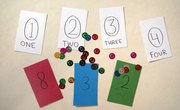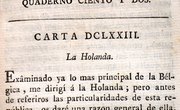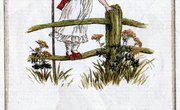"One, Two, Buckle My Shoe" is a nursery rhyme used to teach number recognition, counting skills, and language arts skills to young children. First published in 1805, the rhyme is still taught in preschools today, although the specific words and number of verses vary depending on the source.
Large Motor Activities
Get your students moving by clapping, stomping or knee-slapping to the beat of the rhyme. This is a gentle introduction to meter, and it's also a good way to have them practice large motor skills. Encourage creativity by asking the children to come up with motions for each part of the rhyme. For example, they could bend over and pretend to buckle their shoes as they recite the first line.
Language Activities
Help your students along the path to becoming readers by asking them to identify the rhyming words. Write the rhyme on sentence strips, a large sheet of paper or on a whiteboard. Point to each word of the nursery rhyme as you chant it, clapping on the words that rhyme. Then, circle the words on the paper to provide visual reinforcement. As an extension activity, ask the students to come up with other words that rhyme, and write them on a sheet of paper, sentence strips or on the whiteboard. For example, point out that "two" and "shoe" sound alike, and the word "you" also sounds similar.
Math Activities
Introduce your students to a number line by pointing to each number as you chant the rhyme. Then, evaluate number awareness by having them hold up the correct fingers as they recite each number word in the rhyme. Alternately, pass out objects that represent the objects in the rhyme, and have them count out the appropriate number. For example, the students could set out two buckles for the first part of the rhyme.
Art Activities
Talk about different kinds of shoes. Point out that when this rhyme was written, children's shoes were fastened with buckles. Ask the students how their shoes are fastened. Then, trace each child's shoe on a piece of paper, and have the students color and cut them out. Or, create mini-books of the rhyme with illustrations. Have them color the illustrations, or let them glue objects onto the pages representing the objects in the rhyme. For example, the students could glue twigs onto the "pick up sticks" page.











